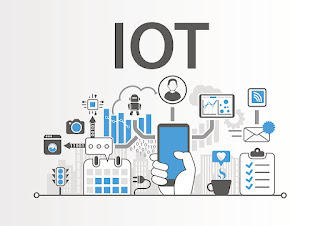All You Need To Know About - IoT Based Smart Agriculture and Its Positive Impacts
IoT Based Smart Agriculture is made possible by digital technology. To handle the difficulties in the agricultural sector, IOT Based technology has become a requirement, and various industries are automating their processes with the latest technologies. Smart agriculture, which is based on IoT technologies, is intended to help producers and farmers minimize waste and increase output by optimizing fertilizer usage to increase plant efficiency. Farmers can better regulate their livestock, develop crops, decrease costs, and conserve resources, all thanks to IoT-based Smart Farming.
With the use of sensors (remote thermometer sensor, wireless tags) and irrigation system automation, IoT-based smart agriculture has enabled farmers to reduce waste and increase output. Farmers may also monitor field conditions from afar with the help of these sensors. When compared to the traditional approach, IoT-based Smart agriculture is extremely efficient. The uses of IoT-based smart agriculture solutions are not limited to large-scale agriculture. Organic farming, family farming in complicated or small spaces, preservation of specific or high-quality variations, and extremely transparent farming could all benefit from IoT-based smart agriculture.
IoT Based Smart Agriculture – the positive impacts
· By linking information such as crops/weather and equipment to auto-adjust temperatures, humidity, and other parameters, farming equipment can be adjusted automatically.
· In big farmland, an IoT-enabled drone assists in receiving current crop status and sending live photographs of farmland.
· You may learn about the present state of fields and crops by analyzing farms with IoT-based Smart Farming Solutions (Remote Thermometer Sensor, Wireless Tags).
Implementing IoT in Smart Agriculture-
· To monitor the climatic changes and weather- When it comes to agriculture, the weather has a huge impact. Almost everything in agriculture is dependent on weather conditions. Temperature, humidity, light intensity, and soil moisture may all be tracked using various sensors in smart farming. These are employed by the reactive system to trigger alarms or automate operations such as water and air management.
· To monitor the quality of the soil- To calculate soil fertility and moisture content, farmers commonly utilize a sampling procedure. As chemical decomposition varies by location, this sampling does not provide reliable data. In the meanwhile, this method isn’t really useful. IoT plays a critical role in farming to overcome this issue. Sensors can be placed at a uniform distance over the parameters of the farms to capture reliable soil data, which can then be used in the farm monitoring dashboard or mobile application.
· Monitoring the health of livestock- IoT devices can be used to collect information about the cattle's whereabouts, well-being, and health. This information can also be used to identify sick animals so that they can be segregated from the rest of the herd, preventing the disease to be spread. With the use of IoT-based sensors, this Live Stock Monitoring also reduces labor costs.
In IoT-based smart agriculture, a system is built to monitor farmland using sensors that detect temperature, light, humidity, soil moisture, and other variables. Then, using an IoT Analytics Platform, an automated system, allow farmers to monitor their fields from anywhere. IoT-based smart technology is utilized to make the agricultural process even smarter and more precise. In terms of cattle and farming, this makes agricultural operations are more controlled and exact. When it comes to the utilization of IoT-based smart agriculture, technologies like sensors, agricultural drones, control systems, autonomous vehicles, and others, are very important.

Comments
Post a Comment